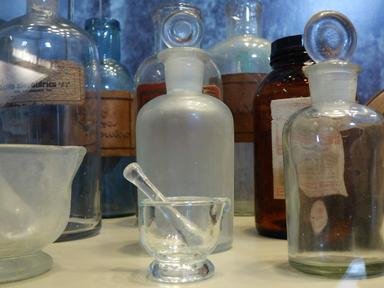Quiz Answer Key and Fun Facts
1. A highly toxic radioactive element was discovered in 1898 by a husband and wife scientific team. Armed with the information that their discovery was named after one of their home countries, can you identify it?
2. Which reddish-orange metal, with a habit of turning green as it corrodes, has a name meaning "of or from Cyprus"?
3. In 1907, two scientists (Georges Urbain and Carl Auer von Welsbach) got into an argument over who had first discovered a new element with the atomic number 71. Welsbach tried to name it Cassiopium, but the scientific community eventually sided with Urbain's claim and named it after which European capital city?
4. A highly radioactive and very unstable synthetic element, with the atomic number 110 and symbol Ds, was discovered at the GSI Helmholtz Centre for Heavy Ion Research and named after the city in which the facility was located. What is it called?
5. Californium was discovered in 1950 and swiftly named after both the university and state of California. Most of its practical applications in the nuclear industry and in analysis and detection equipment are derived from the fact that some of its isotopes are strong emitters of which type of composite subatomic particle?
6. Which highly magnetic element, found in monazite and gadolinite, is named after the capital city of Sweden?
7. If you take some europium, cool it to at least 1.8 degrees Kelvin and then apply 80 gigapascals of pressure, it gains the ability to conduct electricity with zero resistance. What generic term is applied to metals exhibiting this property?
8. Perhaps unsurprisingly, dubnium was not named after the former U.S. President, George "Dubya" Bush. It actually gets its name from which of these places?
9. The silvery-white metallic element with the atomic number 32 is a key component of fibre-optics and other electronic systems. It was discovered in 1886 by the chemist Clemens Winkler and given which name, after his home country?
10. If you came across someone whose breath smelled strongly like garlic then you'd probably be forgiven for assuming that they'd just finished consuming a chicken Kiev. However, they may actually be suffering from exposure to which chemical element that was named after the earth?
Source: Author
Fifiona81
This quiz was reviewed by FunTrivia editor
rossian before going online.
Any errors found in FunTrivia content are routinely corrected through our feedback system.
